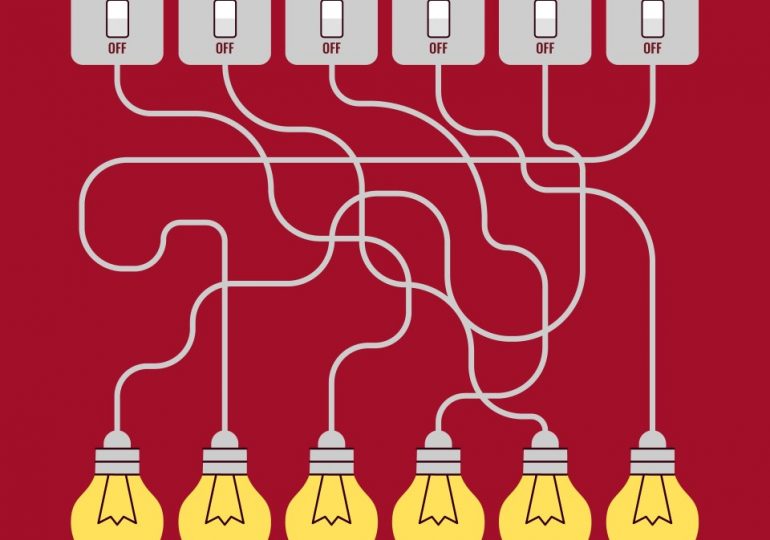A PUZZLING brain teaser will have you scratching your head as you try to match the bulbs to the light switch.
Only those with a brain of a super genius will be able to match the lightswitches to the bulbs in just 31 seconds.
Can you match the switches to the bulbs in 31 seconds?
It will take someone with a keen eye for detail to untangle the the cords to the right switch.
All you have to do is follow the six wires, one by one, to work it out and see if you can beat the average time of 31 seconds.
Are you ready, because the clock is ticking?
Did you know that the first light bulb (like the ones we use today) was invented by Thomas Edison in 1879.
He made a bulb that burned long enough to light a home for many hours, replacing oil lamps and candles.
People who are able to solve the puzzle quickly possess good observational skills and high cognitive speed.
It tests your ability to process a high volume of visual information and the ability to concentrate under high amounts of pressure.
Psychologists at The University of Glasgow found that staring at an optical illusion can improve eye sight by allowing you to see small print.
Escape London says puzzles can also give your mind a great workout and may “boost your brain’s activity” which “reduces the risk of dementia.”
These can help to stimulate several parts of the brain at the same time.
Tasks like this can also provide people with a productive way to have fun and relax.
Meanwhile, why not try some other optical illusions while you scroll?
Spotting animals such as a dog or a cat can be one of the toughest tasks in optical illusions as they’re never quite where you expect.
To make things harder, try figuring out what’s wrong with this image of smiling women as you count their legs in 11 seconds.
Or you might want to prove you have a 20/20 vision as you search for a strawberry in this carnival scene.
How does an optical illusion work?
OPTICAL illusions are a great way to test your eyesight and cognitive skills, requiring you to really think about and observe what’s in front of you.
More often than not, players are required to find something hidden within an image that can’t immediately be found on a first glance.
But the more you stare at it, the more your brain tries to help you find the answer.
What you see and what you think you see are two completely different things, but your senses gather information and send it your brain.
Your brain then creates a perception with this information, whereby it fills in gaps when there is incomplete information, or creates an image that isn’t even there.
This reaction is actually a survival instinct.
Our brains have evolved to quickly work to piece together any information it can get, before doing its best to figure out the rest.
So when you’re looking at an optical illusion, your brain works with what it’s got to develop a reality in order to help you see the answer in the image
Have you worked it out?
Here’s a handy hit if you haven’t: Try tracing the image with your finger so you can follow along.
Time’s up! Well done to everyone who has solved it.
For anyone left scratching their heads – don’t worry, we’ve added the solution below.
While you’re here, why not try three more puzzles.
How did you go? Did you solve it?
Feel Good ContactsCan you find the hidden squirrel in the pile of leaves in eight seconds?[/caption]
Vape GlobalCan you spot the cute dogs in this picture?[/caption]
JagranJoshCan you spot the odd number in this image?[/caption]
Feel Good ContactsSpotted! The squirrel was hiding under the pile of leaves[/caption]
Vape globalThere were three dogs hiding in the picture![/caption]
JagranJoshWere you able to find the odd number 58 highlighted above?[/caption]
Leave a comment








